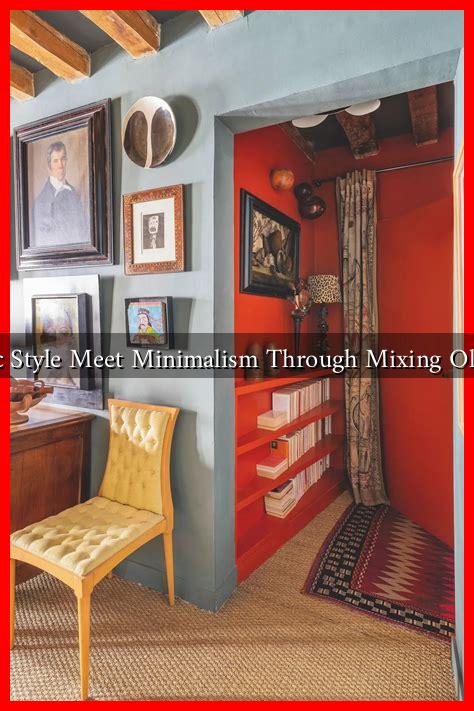-
Table of Contents
Can Eclectic Style Meet Minimalism Through Mixing Old and New?
In the world of interior design, two styles often stand in stark contrast: eclectic style, characterized by a mix of colors, patterns, and textures, and minimalism, which emphasizes simplicity and functionality. However, the question arises: can these two seemingly opposing styles coexist harmoniously? This article explores how eclectic style can meet minimalism through the thoughtful mixing of old and new elements, creating spaces that are both visually appealing and functional.
Understanding Eclectic Style and Minimalism
Before diving into the fusion of these styles, it’s essential to understand their core principles.
- Eclectic Style: This design approach embraces a variety of influences, combining different periods, styles, and textures. It celebrates individuality and creativity, often resulting in vibrant and personalized spaces.
- Minimalism: In contrast, minimalism focuses on simplicity, clean lines, and a limited color palette. The goal is to create a serene environment that reduces visual clutter and emphasizes functionality.
The Art of Mixing Old and New
Combining eclectic style with minimalism involves a delicate balance. Here are some strategies to achieve this blend:
- Choose a Neutral Base: Start with a neutral color palette as your foundation. Whites, grays, and beiges can create a minimalist backdrop that allows eclectic pieces to stand out without overwhelming the space.
- Incorporate Statement Pieces: Select a few bold, eclectic items—such as a vintage armchair or an abstract painting—that can serve as focal points. These pieces should be carefully chosen to complement the minimalist aesthetic.
- Mix Textures: Use a variety of textures to add depth to your space. For example, pair a sleek, modern coffee table with a plush, vintage rug. This contrast can create visual interest while maintaining a minimalist approach.
- Limit Accessories: While eclectic style often involves an abundance of accessories, minimalism encourages restraint. Choose a few meaningful items that reflect your personality and avoid clutter.
Case Studies: Successful Blends of Eclectic and Minimalist Styles
Several designers and homeowners have successfully merged eclectic and minimalist styles, showcasing the potential of this combination.
- Designer Kelly Wearstler: Known for her bold use of color and texture, Wearstler often incorporates minimalist elements into her eclectic designs. Her spaces feature striking art pieces against a backdrop of clean lines and neutral tones.
- Homeowner Sarah Johnson: In her urban apartment, Johnson combined a minimalist layout with eclectic decor. She chose a simple white sofa and paired it with colorful throw pillows and a vintage coffee table, creating a cozy yet uncluttered environment.
Statistics and Trends in Design
The trend of mixing styles is not just a personal preference; it reflects broader shifts in consumer behavior. According to a survey by the American Society of Interior Designers (ASID), 60% of homeowners express a desire for personalized spaces that reflect their unique tastes. This desire has led to a rise in hybrid design styles, where eclectic and minimalist elements coexist.
Conclusion: Finding Harmony in Contrast
In conclusion, the fusion of eclectic style and minimalism is not only possible but can result in stunning and functional spaces. By carefully selecting a neutral base, incorporating statement pieces, mixing textures, and limiting accessories, homeowners can create environments that reflect their individuality while maintaining a sense of calm and order. As design trends continue to evolve, the blending of old and new will likely remain a popular choice for those seeking to express their unique style.
For more insights on interior design trends, visit ASID.

